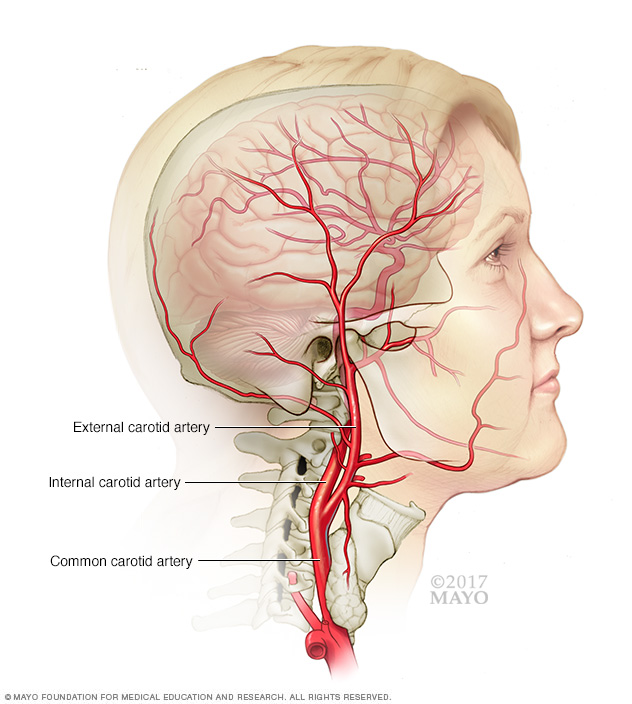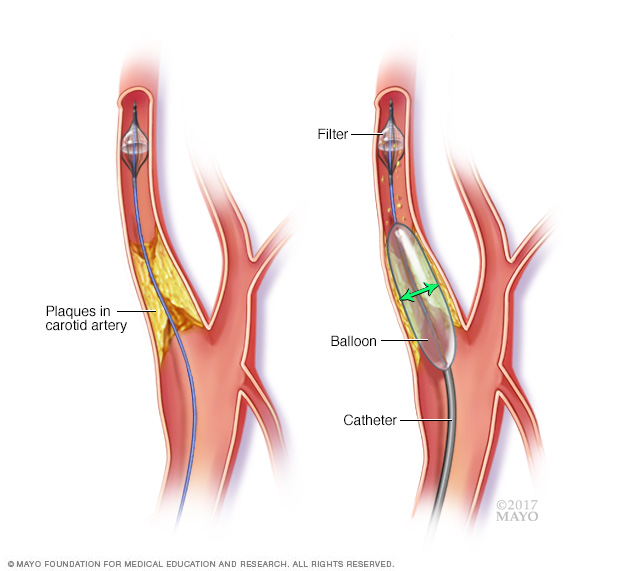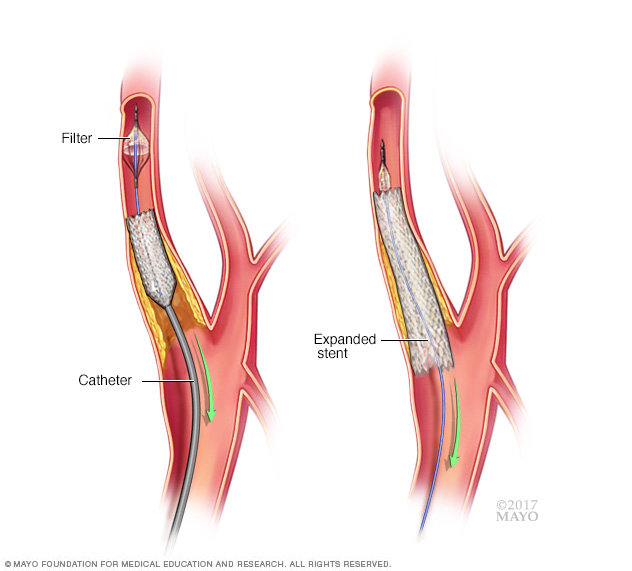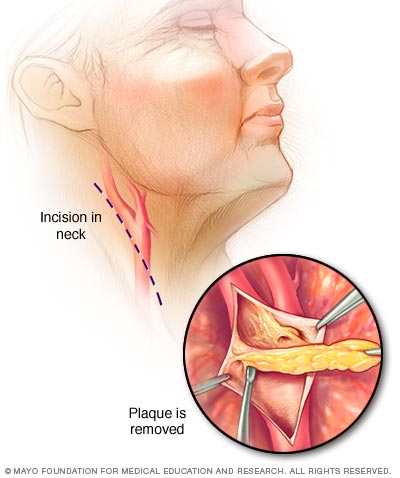Carotid endarterectomy
Overview
Carotid endarterectomy is a procedure to treat carotid artery disease. This disease occurs when fatty, waxy deposits build up in one of the carotid arteries. The carotid arteries are blood vessels located on each side of your neck (carotid arteries).
This buildup of plaque (atherosclerosis) may restrict blood flow to your brain. Removing plaque causing the narrowing in the artery can improve blood flow in your carotid artery and reduce your risk of stroke.
In carotid endarterectomy, you receive a local or general anesthetic. Your surgeon makes an incision along the front of your neck, opens your carotid artery and removes the plaques that are clogging your artery. Then, your surgeon repairs the artery with stitches or a patch made with a vein or artificial material (patch graft).
Sometimes surgeons may use another technique called eversion carotid endarterectomy. This involves cutting the carotid artery and turning it inside out, then removing the plaque. Your surgeon then reattaches the artery.
Why it's done
Doctors may recommend carotid endarterectomy if you have a severe narrowing in your carotid artery. There are several other factors that will be considered other than the degree of blockage in the artery. You may or may not be experiencing symptoms. Your doctor will evaluate your condition and determine whether you're a candidate for carotid endarterectomy.
If carotid endarterectomy isn't the best option for you, you might have a procedure called carotid angioplasty and stenting instead of carotid endarterectomy. In this procedure, doctors thread a long hollow tube (catheter) with a small balloon attached through a blood vessel in your neck to the narrowed artery. The balloon is then inflated to widen the artery. A metal mesh tube (stent) is often inserted to decrease the chance of the artery narrowing again.

The carotid arteries are a pair of blood vessels. There's one on each side of the neck. The carotid arteries deliver blood to the brain and head.

In carotid angioplasty, a long, hollow tube (catheter) is threaded through the arteries to the narrowed carotid artery in the neck. A filter is inserted to catch any debris that may break off during the procedure. Then, a tiny balloon at the end of the catheter is inflated to open the narrowed area.

In carotid stenting, a long, hollow tube (catheter) is threaded through the arteries to the narrowed carotid artery in the neck. A metal mesh tube (stent) is inserted into the vessel to serve as a scaffold that helps prevent the artery from narrowing again. The catheter and the filter — which catches any debris that may break off during the procedure — are removed.

In carotid endarterectomy, a surgeon opens the carotid artery to remove the plaques that block it.
What you can expect
For carotid endarterectomy surgery, you may be given a numbing medication. Or you may be given general anesthesia that puts you in a sleep-like state. Your surgeon will make a cut along the front of your neck, open your carotid artery, and remove the plaque deposits clogging your artery. Then your surgeon will repair the artery with stitches or a patch made with a vein or artificial material. Your surgeon might use another technique that involves cutting the carotid artery and turning it inside out, then removing the plaque.
Last Updated Dec 11, 2018
© 2024 Mayo Foundation for Medical Education and Research (MFMER). All rights reserved. Terms of Use